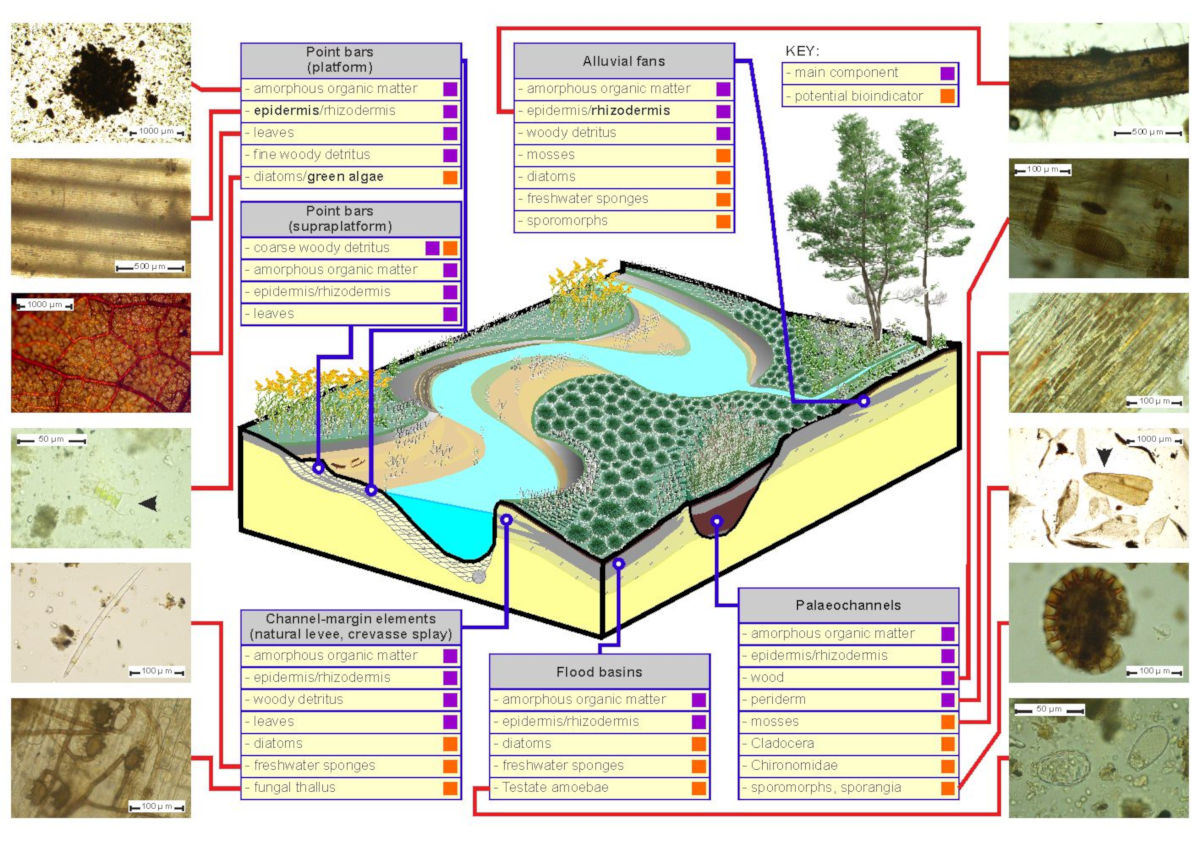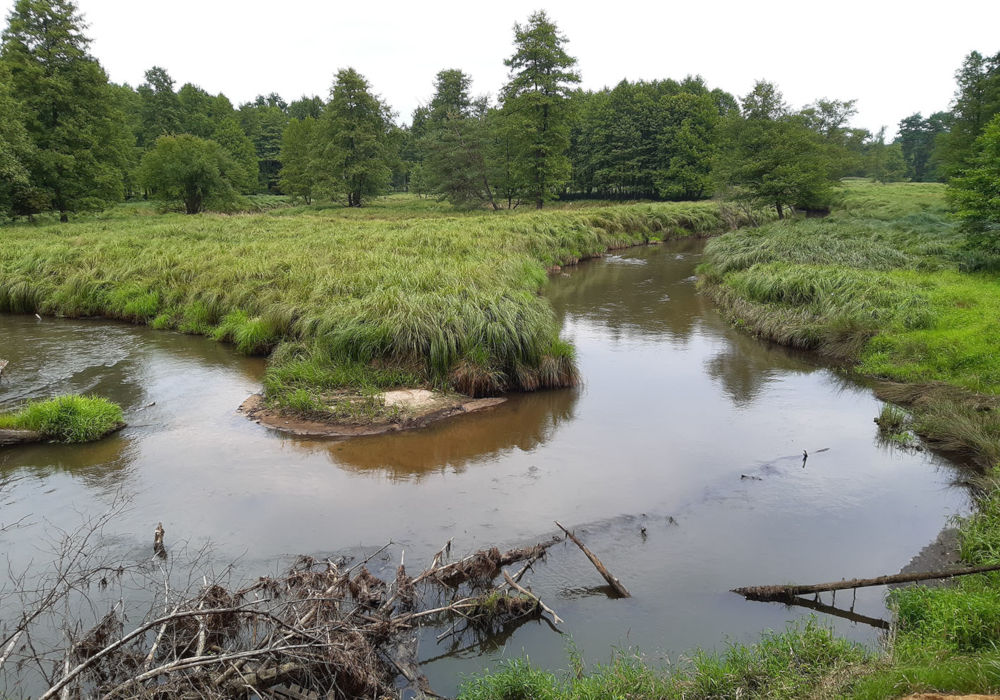River valleys are reservoirs of dynamic organic matter (OM) playing a significant role in the global carbon cycle. The floodplains of meandering rivers, which are widely distributed around the world from subarctic to tropical areas and characterized by relatively high OM resources, are of particular importance in this respect.
The aim of the study, published in the December issue of Catena, was to identify the forms in which OM occurs, to quantify their ratios and the potential for its preservation within the major depositional subenvironments of the floodplain of a low-energy sand-bed meandering river. Studies have shown that OM deposited in floodplain sediments consists mainly of plant debris, including fragments of the primary covering tissue (epidermis, rhizodermis) and wood. An indicative feature of flood layers is an elevated content of diatom and freshwater sponge remains, while remains of mosses and Cladocera have bioindicative value for the palaeochannel fills. The radiocarbon data indicate a limited preservation potential of OM accumulated in non-peat-forming environments of the proximal floodplain (from a single season to hundreds of years) and a high preservation potential of OM accumulated in peat-forming environments of the distal floodplain (up to thousands of years). The high content of amorphous OM indicates the sensitivity of riverine ecosystems to human interference. In order to maintain a sustainable carbon balance in river valleys, drainage measures should be abandoned in particular.
Wójcicki K.J., 2022. Current and paleo sources of organic material within fluvial features of the meandering Ruda River, Poland. Catena, 219, 106636: 1-17. https://doi.org/10.1016/j.catena.2022.106636







